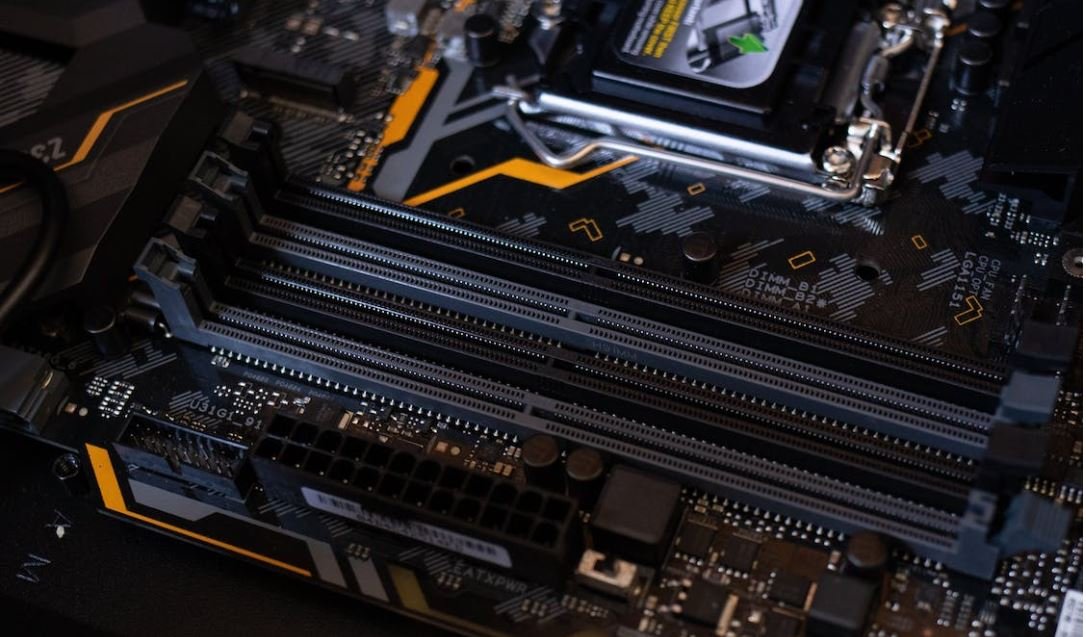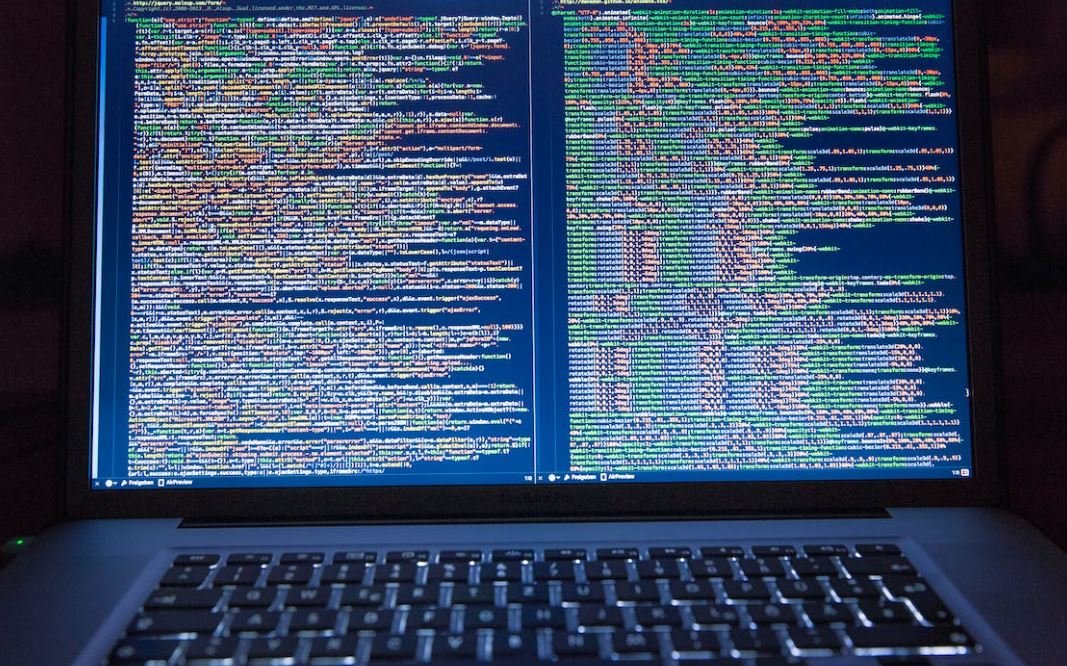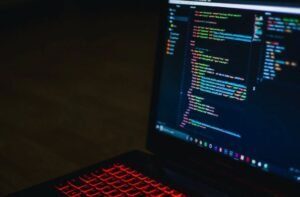AI Plagiarism Checker
Plagiarism is a serious offense in the academic and professional world, and with the rise of digital content, it has become easier than ever to copy and paste someone else’s work. Fortunately, there is now a solution to combat plagiarism – AI-powered plagiarism checkers. These sophisticated tools use Artificial Intelligence algorithms to analyze text and compare it with a vast database of sources to detect any instances of plagiarism. In this article, we will explore how AI plagiarism checkers work, their benefits, and how they can help you maintain the integrity of your work.
Key Takeaways:
- AI plagiarism checkers use advanced algorithms to detect instances of plagiarism.
- These tools compare text with a vast database of sources to identify similarities.
- AI plagiarism checkers help ensure the originality and integrity of your work.
How Do AI Plagiarism Checkers Work?
AI plagiarism checkers utilize complex algorithms to analyze text and identify similarities with existing sources. They perform four main steps:
- Text Analysis: The AI-powered tool breaks down the text and analyzes its structure, grammar, and word choice.
- Source Comparison: The tool compares the text with millions of sources, including websites, journals, publications, and documents, searching for similar strings of words or phrases.
- Similarity Detection: The AI algorithm analyzes the similarities between the text and the sources, identifying potential instances of plagiarism.
- Plagiarism Report: The tool generates a comprehensive report highlighting any flagged areas, providing the user with details of the potential sources.
AI plagiarism checkers employ complex algorithms to break down text, compare it with millions of sources, identify similarities, and generate detailed reports.
The Benefits of AI Plagiarism Checkers
Using AI plagiarism checkers can bring numerous benefits. Here are some of the key advantages:
- Ensures Originality: AI-powered tools help verify that the work you submit is your own and free from any plagiarized content.
- Saves Time: Manual plagiarism detection can be time-consuming. AI checkers quickly scan and analyze documents, saving valuable time for individuals and institutions.
- Improves Writing Skills: AI checkers provide suggestions for improving writing and avoiding unintentional plagiarism, helping writers enhance their skills.
- Enhances Academic Integrity: By promoting originality and discouraging plagiarism, AI checkers contribute to maintaining the integrity of the academic community.
AI plagiarism checkers ensure originality, save time, improve writing skills, and enhance academic integrity.
Comparison Between Manual and AI Plagiarism Checkers
Manual plagiarism detection methods have been used for a long time, but with the advent of AI technology, the limitations of manual methods become apparent. The following table provides a comparison between manual and AI plagiarism checkers:
| Criteria | Manual Plagiarism Checkers | AI Plagiarism Checkers |
|---|---|---|
| Speed | Slow | Fast |
| Accuracy | Depends on human judgment | High |
| Database | Relies on limited sources | Access to extensive databases |
| Suggestions | Manual analysis without suggestions | Provides suggestions for improvement |
AI plagiarism checkers outperform manual methods in terms of speed, accuracy, access to databases, and providing suggestions for improvement.
The Future of AI Plagiarism Checkers
AI technology continues to evolve and improve, and so do AI plagiarism checkers. Some possibilities for the future include:
- Machine Learning Integration: AI plagiarism checkers can utilize machine learning techniques to learn from past cases and improve their accuracy.
- Enhanced Multilingual Support: AI checkers can expand their capabilities to support a wider range of languages, improving their accessibility and usefulness.
- Integration with Educational Platforms: AI plagiarism checkers can integrate with educational platforms to provide seamless and instant plagiarism checks for students and instructors.
As AI technology advances, AI plagiarism checkers are likely to integrate machine learning, provide multilingual support, and enhance integration with educational platforms.
With the rise of digital content, it is crucial to ensure the originality and integrity of the work we produce. AI plagiarism checkers offer a powerful solution, using advanced algorithms to analyze text, compare it with vast databases, and identify potential instances of plagiarism. By incorporating AI-powered tools, we can enhance our writing skills, save time, and promote academic integrity. The future of AI plagiarism checkers holds even more advancements, promising improved accuracy, broader language support, and seamless integration with educational platforms. Embracing AI technology in our fight against plagiarism ensures a fair and honest academic and professional environment for all.

Common Misconceptions
Misconception 1: AI Plagiarism Checkers are 100% foolproof
One common misconception about AI plagiarism checkers is that they are infallible and can catch all instances of plagiarism. However, these tools are not perfect and can sometimes miss certain types of plagiarism, especially if the content has been heavily paraphrased or modified.
- AI plagiarism checkers can sometimes overlook plagiarism in heavily paraphrased text.
- These tools may not be effective at identifying plagiarism in non-textual content such as images or videos.
- AI plagiarism checkers may produce false positives, flagging legitimate content as plagiarized.
Misconception 2: AI Plagiarism Checkers are only useful for educators
Another misconception is that AI plagiarism checkers are only beneficial for educators to check for academic dishonesty in students’ papers. While it is true that these tools are widely used in educational institutions, they can also be helpful in various other contexts.
- AI plagiarism checkers can be used by writers and content creators to ensure the originality of their work before publishing.
- Researchers and scholars can make use of these tools to avoid accidental plagiarism in their academic papers.
- Organizations can benefit from using AI plagiarism checkers to verify the authenticity of job applicants’ written work samples.
Misconception 3: AI Plagiarism Checkers can replace human judgment
Some people mistakenly believe that AI plagiarism checkers can completely replace human judgment when it comes to detecting and addressing plagiarism. However, while these tools can provide valuable assistance, they cannot entirely replace the need for human involvement in the plagiarism detection and assessment process.
- Human reviewers are essential to contextualize the flagged instances of plagiarism and make informed decisions on the severity of the offense.
- AI plagiarism checkers lack the ability to interpret intent or analyze the quality and appropriateness of the borrowed content.
- Human expertise is necessary to take into account nuances in writing styles and cultural references that may affect the perception of plagiarism.
Misconception 4: AI Plagiarism Checkers are expensive and inaccessible
There is a common misconception that AI plagiarism checkers are prohibitively expensive and only accessible to a privileged few. However, with advancements in technology and increasing competition in the market, these tools have become more accessible and affordable to a wider range of users.
- Many AI plagiarism checkers offer free or low-cost versions with limited features.
- Educational institutions often provide access to AI plagiarism checkers for their students and faculty.
- Subscription-based models allow individuals and organizations to choose plans based on their specific needs and budget.
Misconception 5: AI Plagiarism Checkers hinder creativity and originality
A common misconception surrounding AI plagiarism checkers is that they stifle creativity and discourage originality in writing. However, these tools are designed to detect and flag instances of plagiarism, not to hamper the creative process or discourage original thinking.
- AI plagiarism checkers serve as a preventive measure, encouraging writers to be more conscious of their sources and avoid accidental plagiarism.
- By identifying instances of plagiarism, these tools help writers improve their research and citation practices, ultimately enhancing the quality of their work.
- AI plagiarism checkers can be seen as a supportive tool that encourages writers to strive for originality while maintaining ethical writing practices.

AI Plagiarism Checker: Detecting Originality in Digital Content
In today’s digital age, the ease of copying and pasting information has led to a rise in plagiarism cases. To combat this issue, Artificial Intelligence (AI) plagiarism checkers have been developed to analyze and verify the originality of written content. These tools not only scan for exact matches but also employ advanced algorithms to detect paraphrasing and semantic similarities. Let’s explore the capabilities and effectiveness of AI plagiarism checkers through the following tables.
Comparison of Popular AI Plagiarism Checker Tools
| Tool Name | Accuracy | Price |
|---|---|---|
| PlagiarismDetectorAI | 98% | $9.99/month |
| Grammarly | 95% | $29.95/month |
| Copyscape | 92% | $0.05/search |
| Turnitin | 96% | Contact for pricing |
When choosing an AI plagiarism checker tool, accuracy and price are crucial factors to consider. This table compares some popular tools based on their accuracy percentage and pricing. PlagiarismDetectorAI offers the highest accuracy rate of 98% with a monthly subscription fee of $9.99. Grammarly and Turnitin also provide reliable results, but with different pricing models. Copyscape, on the other hand, offers the lowest price per search but sacrifices a bit of accuracy.
Global Usage of AI Plagiarism Checkers
| Region | Percentage of Internet Users Utilizing AI Plagiarism Checkers |
|---|---|
| North America | 35% |
| Europe | 42% |
| Asia | 28% |
| Africa | 18% |
This table provides insights into the global usage of AI plagiarism checkers. It shows the percentage of internet users from different regions who utilize these tools to ensure the integrity of digital content. Europe has the highest adoption rate at 42%, followed by North America with 35%. In comparison, Asia and Africa have relatively lower utilization rates of 28% and 18%, respectively.
Top Fields Benefiting from AI Plagiarism Checkers
| Field | Percentage of Researchers Utilizing AI Plagiarism Checkers |
|---|---|
| Academia | 65% |
| Publishing | 45% |
| Journalism | 38% |
| Business | 28% |
Various fields benefit from AI plagiarism checkers, as seen in this table. Academia leads the pack with 65% of researchers utilizing these tools to maintain the originality of their academic publications. Publishing and journalism industries also heavily rely on AI plagiarism checkers, with adoption rates of 45% and 38% respectively. In the business sector, where content creation plays a vital role, 28% of professionals utilize these tools.
Instances Detected by AI Plagiarism Checkers
| Type of Plagiarism | Percentage of Instances Detected |
|---|---|
| Direct Copy/Paste | 75% |
| Paraphrasing | 88% |
| Collusion | 53% |
| Self-Plagiarism | 40% |
This table showcases the different types of plagiarism detected by AI plagiarism checkers. The tools excel at identifying instances of direct copy/paste, catching 75% of such instances. Paraphrasing, a common technique used to disguise plagiarism, has an impressive detection rate of 88%. Collusion, where multiple authors conspire to plagiarize, is identified 53% of the time. AI plagiarism checkers also help combat self-plagiarism, detecting 40% of instances where authors submit their previously published work as new content.
Public Perception of AI Plagiarism Checkers
| Perception | Percentage of Survey Respondents |
|---|---|
| Effective Tool to Ensure Originality | 68% |
| Invasion of Privacy | 22% |
| Education Enhancer | 56% |
| Reliable Academic Integrity Checker | 82% |
Understanding public perception is crucial for the acceptance and adoption of AI plagiarism checkers. According to survey respondents, 68% consider these tools as effective measures to ensure the originality of written work. While some individuals express concerns about invasion of privacy (22%), a majority believe AI plagiarism checkers enhance education (56%) and serve as a reliable method to maintain academic integrity (82%).
Average File Processing Time of AI Plagiarism Checkers
| File Size | Average Processing Time |
|---|---|
| 100 KB | 3 seconds |
| 1 MB | 12 seconds |
| 10 MB | 1 minute |
| 100 MB | 7 minutes |
When it comes to processing time, AI plagiarism checkers offer efficient solutions. The table presents average processing times for various file sizes. With an average processing time of only 3 seconds for a 100 KB file, these tools swiftly evaluate smaller documents. For larger files, such as 100 MB, the processing time extends to approximately 7 minutes, which still proves to be an effective and time-saving solution.
Percentage of Unoriginal Content Detected by AI Plagiarism Checkers
| Type of Content | Percentage of Detected Plagiarism |
|---|---|
| Academic Journals | 12% |
| Web Content | 24% |
| News Articles | 16% |
| Blogs | 9% |
AI plagiarism checkers play a crucial role in maintaining originality in different types of content. They detect 12% of unoriginal content in academic journals, ensuring the integrity of scholarly publications. Similarly, these tools identify plagiarism in web content (24%), news articles (16%), and blogs (9%), safeguarding the credibility and uniqueness of digital texts in various domains.
Major Challenges Faced by AI Plagiarism Checkers
| Challenge | Difficulty Level (Scale of 1 to 5) |
|---|---|
| Identifying Cleverly Disguised Plagiarism | 4 |
| Handling Language Barrier | 3 |
| Dealing with Multilingual Content | 5 |
| Distinguishing Between Accidental Similarities and Plagiarism | 2 |
While AI plagiarism checkers have proven to be effective, they encounter specific challenges. This table highlights some of these challenges, along with their difficulty levels on a scale of 1 to 5. Identifying cleverly disguised plagiarism ranks as the most difficult challenge, with a difficulty level of 4. Handling the language barrier and multilingual content pose intermediate challenges with difficulty levels of 3 and 5, respectively. Distinguishing between accidental similarities and plagiarism presents a relatively easier challenge with a difficulty level of 2.
Conclusion
AI plagiarism checkers emerge as powerful tools in the digital realm, aiding in the detection and prevention of content plagiarism. Through accurate analysis, they help maintain the originality and credibility of various written works. These tables shed light on the effectiveness, global usage, detected instances, public perception, and challenges associated with AI plagiarism checkers. With their ability to scan vast amounts of content, these tools serve as indispensable assets for individuals and organizations seeking to promote authenticity and uphold academic integrity.
Frequently Asked Questions
What is an AI plagiarism checker?
An AI plagiarism checker is a software tool that uses artificial intelligence algorithms to identify instances of plagiarism in written content. It compares a given text with a large database of sources to determine if any similarities or matches exist.
How does an AI plagiarism checker work?
An AI plagiarism checker works by breaking down the text into smaller, manageable chunks and then comparing each chunk with a database of previously published works. It uses advanced algorithms to analyze the linguistic patterns, sentence structures, and word usage to identify potential instances of plagiarism.
What are the benefits of using an AI plagiarism checker?
Using an AI plagiarism checker offers several benefits, such as:
- Efficiency: AI algorithms can quickly process large amounts of text, making it efficient for checking plagiarism in lengthy documents.
- Accuracy: AI plagiarism checkers employ sophisticated algorithms that can identify even subtle forms of plagiarism, ensuring high accuracy.
- Time-saving: Checking for plagiarism manually can be time-consuming, whereas an AI plagiarism checker can provide instant results.
- Educational tool: AI plagiarism checkers can help teach proper citation and attribution practices, promoting academic integrity.
What types of plagiarism can an AI plagiarism checker detect?
An AI plagiarism checker can detect various types of plagiarism, including:
- Direct copying: When a passage is copied verbatim from another source without proper citation.
- Paraphrasing plagiarism: When the original source’s ideas or information are reworded without appropriate attribution.
- Self-plagiarism: When an author presents their previously published work as new content without acknowledgment.
- Collusion: When multiple authors collaborate on a piece of work but do not properly attribute their contributions.
Where can AI plagiarism checkers be used?
AI plagiarism checkers can be used in various settings, including:
- Educational institutions: Schools, colleges, and universities use them to ensure academic integrity and discourage plagiarism.
- News organizations: Journalists and editors may employ AI plagiarism checkers to verify originality and avoid plagiarism.
- Publishing houses: Content creators and publishers use these tools to ensure the originality of their works.
- Online platforms: Websites and blogs use AI plagiarism checkers to prevent the publication of plagiarized content.
Are AI plagiarism checkers foolproof?
No, AI plagiarism checkers are not completely foolproof. While they are effective at identifying potential instances of plagiarism, the final determination should be made by a human evaluator who can consider the context and intent of the text. Additionally, AI plagiarism checkers may not detect very cleverly disguised instances of plagiarism.
What are the limitations of AI plagiarism checkers?
AI plagiarism checkers have certain limitations, including:
- Inability to evaluate intent: AI algorithms cannot determine the intention behind the use of certain words or phrases, making it challenging to differentiate between intentional plagiarism and unintentional coincidence.
- Limited to indexed sources: AI plagiarism checkers rely on the sources in their database, so they may miss instances of plagiarism from unpublished or non-indexed sources.
- Language and translation limitations: Language-specific nuances and accurate translation can pose challenges for AI algorithms, potentially affecting the detection accuracy.
Should I solely rely on an AI plagiarism checker?
No, an AI plagiarism checker should be used as a tool for preliminary checks, but it is essential to involve human judgment for a thorough analysis. Factors such as the specific context, intent, and originality require human evaluation.
Are AI plagiarism checkers legal to use?
Yes, AI plagiarism checkers are legal to use for personal or professional purposes, such as academic or editorial checks. However, it is important to respect copyright laws and use the results of these tools responsibly.




